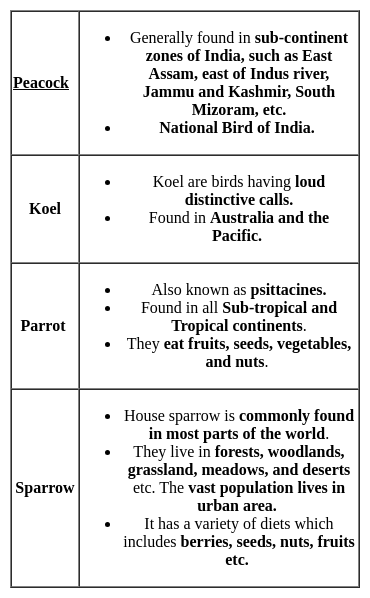EVS Content (Birds & Insects) - CTET & State TET MCQ
10 Questions MCQ Test EVS & Pedagogy Paper 1 for CTET & TET Exams - EVS Content (Birds & Insects)
The feathers of the birds are of different colours, shapes and sizes. Their feathers help them to fly and
A. eat different types of food
B. keep them warm
C. walk in different ways
D. keep them waterproof
Select from the following, the reasons of considering the earthworms as the friends of the farmers:
A) Earthworms soften the soil of the field in which they live by digging the soil underneath.
B) The tunnels dug by earthworms provide easy passage for air and water into the soil.
C) The earthworms eat the weeds and save the main crop.
D) The earthworms eat the dead leaves and plants. The dropping of the earthworms makes the soil more fertile.
The correct statements are
| 1 Crore+ students have signed up on EduRev. Have you? Download the App |
A boy wakes up a night and sees a bird flying very fast through the corners of buildings. When he studied that bird, he knows that these birds can see good at night and only in the colour black and white. These birds are known as _____
An ant was going along on the ground. It saw a group of ants coming from the other side. The first ant recognized that the group was not his and he came back to its hole.
How did the ant know that the other ants were not from its group?
Which of the following insects live in a group and have specific role allocation?
Choose the correct statement:
A. Honeybees are attracted to the litchi flowers.
B. Honeybees lay their eggs from January to March.
C. October to December is the best time to start beekeeping.
|
19 videos|109 docs|36 tests
|
|
19 videos|109 docs|36 tests
|



















